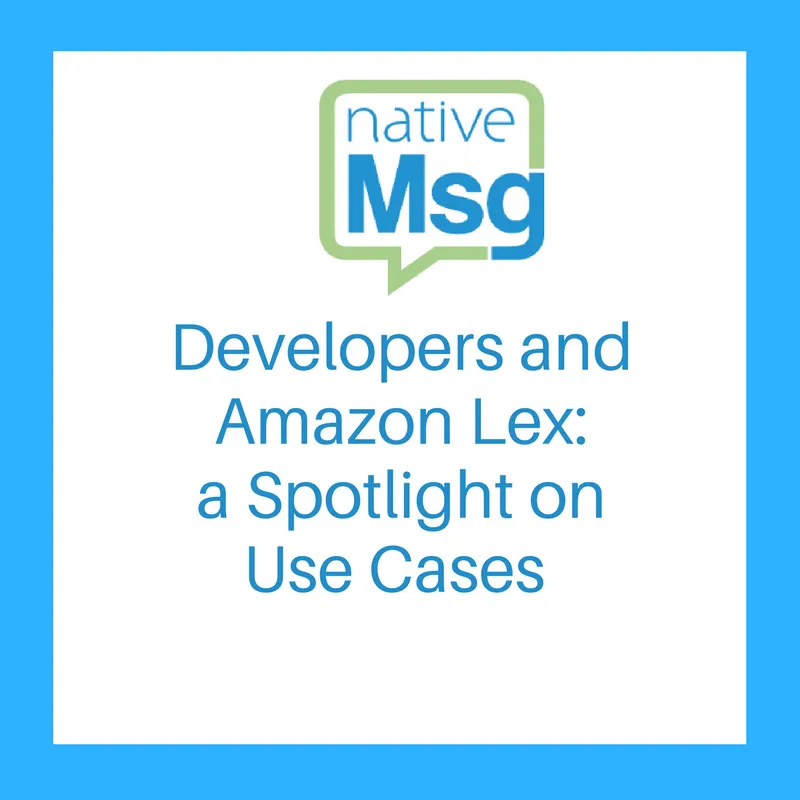When Amazon announced in April of this year that it would open its Alexa technology to “General Availability” access, it paved the way for conversational voice app development with its Amazon Lex service. Likewise, Amazon Lex includes access to Amazon Polly and Amazon Rekognition, which allows developers to not only create voice responsive apps, but also access voice-to-text and image analysis technology, respectively. Per, Amazon CTO Werner Vogels:
Amazon AI services make the full power of Amazon’s natural language understanding, speech recognition, text-to-speech, and image analysis technologies available at any scale, for any app, on any device, anywhere.
Alexa Technology: Amazon Lex Service Features
Amazon Lex allows for developers to harness the same technology used to drive Alexa, Amazon’s voice recognition interface. It allows companies to more easily make either voice or text-based conversational interfaces for their apps. Amazon’s intent, naturally, was to provide value and to place its technology at the forefront to lead in user acquisition and in the market.
Amazon provides a managed service meant to help an organization scale. Data is stored on Amazon’s cloud so companies have access to comprehensive analytics to inform their customer engagement strategies.
It also allows for anyone without ML or DL skills to start building and integrating across commonly used platforms, and a pay as as you go, non-contract model (though you do need an Amazon Web Services, AWS, account).
Essentially, Amazon Lex provides companies a scaled solution to build chatbots into their own software, saving time and resources that, realistically, wouldn’t be available for smaller organizations.
And wait, it gets even more fun: As of September 2017, AWS offers Lex developers the ability to export your Lex schema (build) into the “Alexa Skills Kit (ASK),” as a JSON file, to make it even easier to build an Alexa skill. Then, of course, Amazon’s sweetened the pot to incentivize developers to create engaging voice apps and paying for it.
Awesome, right?
But companies with the opportunity to use text and voice responsive conversational interfaces — chatbots — are faced with the quandary of how best to employ it to leverage engagement. This can be somewhat of an irksome “opportunity” given that the technology is still developing so that there are thresholds to consider in how best to maximize the “magic,” as Amazon refers to it.
As well, the market hum indicates that upon general release, developers didn’t have all they needed to create effective voice apps.
Nevertheless, it’s too intriguing a challenge and technology to demur the effort now.
Per Amazon, “Amazon Lex enables you to define entirely new categories of products made possible through conversational interfaces.”
But since April, and in the ensuing months, what have been the best use cases? Clearly…the information’s spotty. And from seemingly every vantage point, applications have been held, one could say, close to the chest.
From enterprise to start-up, here is a spotlight on what’s happening now:
Ford and Alexa
While Ford partnered with Amazon months ago to integrate Alexa into its Fusions and F-150s, and technically did so before the General Availability release, we had to include it.
Start your car from inside your home on a blustery winter day? Uh, yes. Conversely, turn on lights in your home from your car? Yep. Or simply access your music library.
Money Lion Personal Finance Monitoring Bot
This bot received third place in AWS chatbot challenge, but has a broader adoptive incentive for mass use, i.e. personal banking.
The chatbot provides you with bank balances, credit scores and total monthly spend at specific locations. Note that you can do so with text, but that the Lex service allows for voice interface as well.
Enterprise Virtual Assistants
Not only is the tech a means for productivity boosting, but it’s also paving the way for companies to move toward company-wide automation of data-inquiry or easy remote access to system functionality. To date, specific-use-case information may be incubating while organization’s integrate it.
Simple Intent Bots to Smarter Solutions
Holistically, you can use the technology in almost any scenario — controlling devices, appliances, measuring your heart rate, to be entertained, data retrieval, customer support and do so with a voice responsive interface. But it remains to be seen that since April, many use cases have dominated the blogosphere. Rather, the excitement in the beginning of the year’s CES conference at Alexa technology — from TVs to smart hockey pucks — is the best marker for what we may see from developers in the near future.
So, developers, just what are you conjuring up now with Lex?

